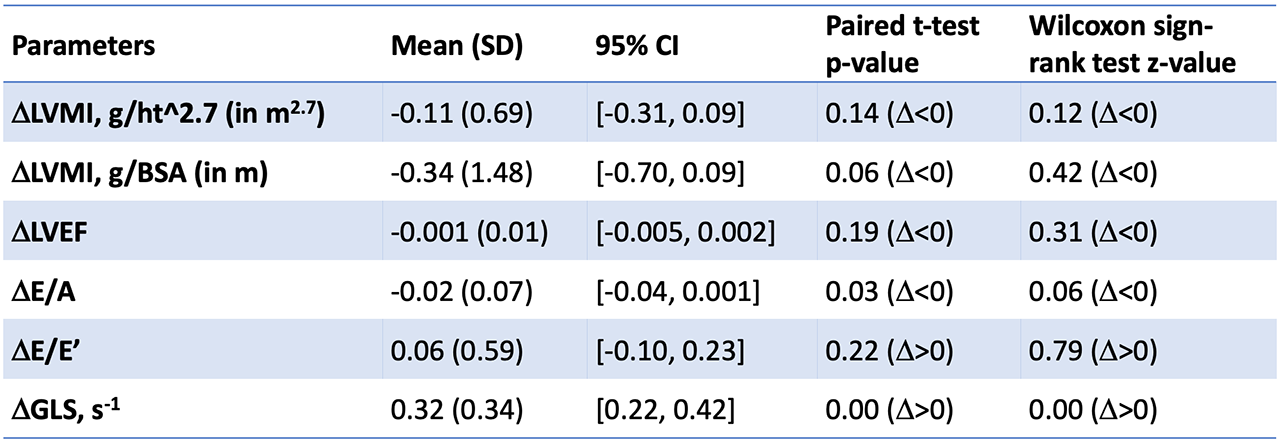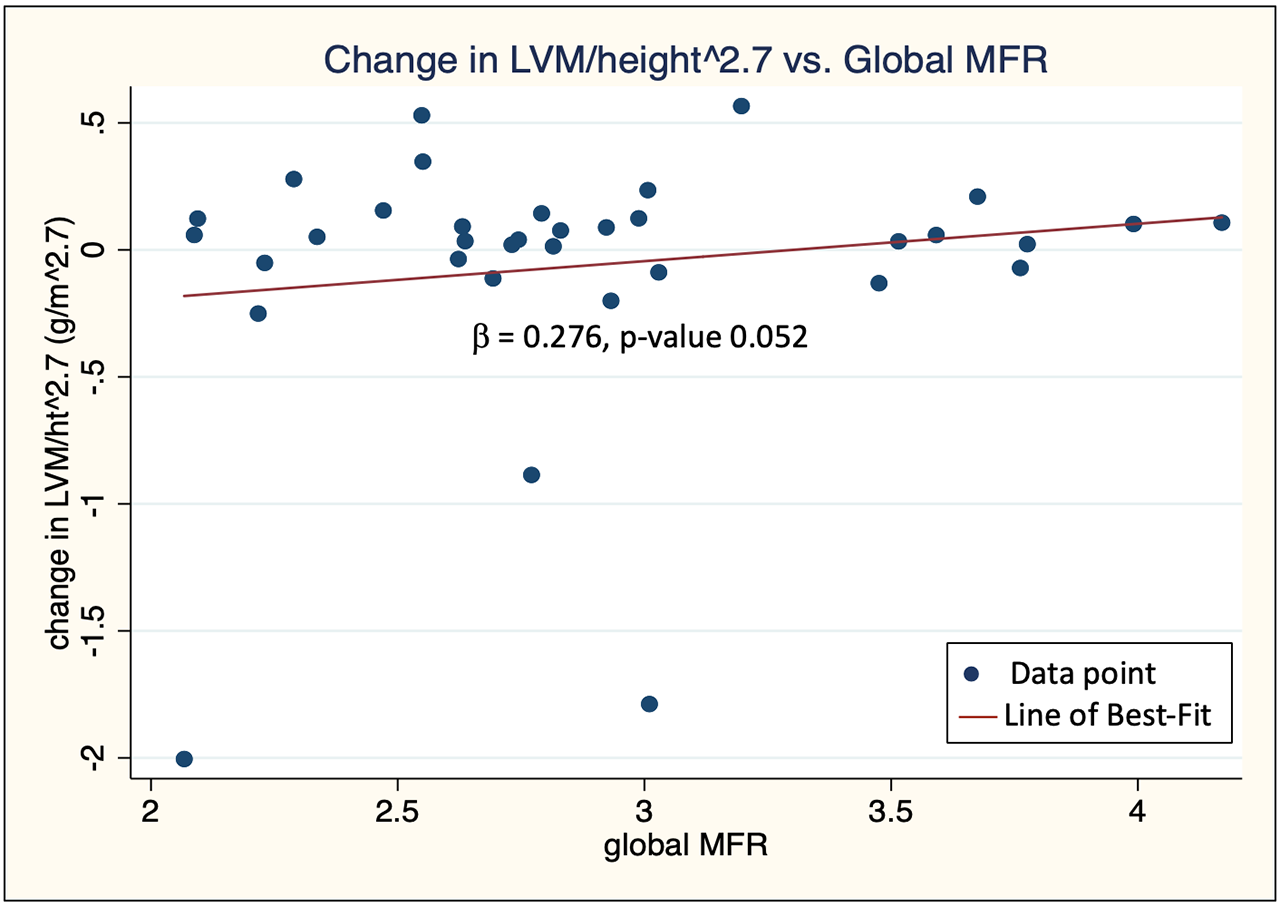Session Information
Date: Tuesday, November 12, 2019
Title: RA – Diagnosis, Manifestations, & Outcomes Poster III: Comorbidities
Session Type: Poster Session (Tuesday)
Session Time: 9:00AM-11:00AM
Background/Purpose: The risk of developing heart failure (HF) in RA patients as compared with non-RA subjects is significantly higher even when adjusted for traditional cardiovascular (CV) risk and presence of ischemic heart disease. HF in RA patients is characterized by preserved ejection fraction and diastolic dysfunction. A recent prospective study demonstrated more rapid declines in diastolic function and left ventricular mass (LVM) over time in RA patients compared with control subjects. In RA participants in the RHYTHM (RHeumatoid arthritis: studY of THe Myocardium) study, we observed a high prevalence of subclinical myocarditis (39% with visualized uptake on 18-Fluorodeoxyglucose Positron Emission Tomography-Computed Tomography [18-FDG PET-CT]) as well as microvascular dysfunction (myocardial flow reserve reduced [MFR] in 29%). We hypothesized that RA patients with subclinical myocarditis and/or microvascular dysfunction would have greater decline in LV structure and function over time compared to RA patients without these features.
Methods: One hundred nineteen RA patients without clinical CV disease who were enrolled in RHYTHM underwent baseline 18-FDG PET-CT to measure myocardial FDG uptake as a measure of myocardial inflammation (assessed as standardized uptake value [SUV]), and MFR as a measure of microvascular function; in addition, 3-dimensional (3D) echocardiography was performed to assess LV structure and function. Forty-nine patients returned for a follow-up visit at 3-6-years post-baseline and underwent repeat 3D echocardiography. The mean changes in echo parameters were calculated and Wilcoxon sign-rank tests performed to assess statistical differences between groups. Multivariable regression models were created to assess associations between log transformed mean SUV and global MFR with change in selected echocardiographic parameters.
Results: Although in the overall group there was no significant change in the LVM index (LVMI) over time (Table 1), both higher baseline myocardial SUV (i.e., myocarditis) and lower (less favorable) MFR were associated with a greater decline in LVMI (Figures 1 and 2). In the overall group, although there was no decline in ejection fraction (EF) over time, a significant decline in global longitudinal strain (GLS), a more sensitive measure of systolic dysfunction than EF, was observed. With regard to diastolic function, a decline in the E/A ratio, but not in the E/E’ ratio, was observed over time. However, there were no statistically significant relationships in changes in systolic or diastolic function with baseline SUV or MFR.
Conclusion: These results suggest that subclinical myocardial inflammation and myocardial microvascular dysfunction may be risk factors for myocardial remodeling and decline in systolic and diastolic function in individuals with RA. Whether these subclinical features lead to clinical HF in RA is, as yet, unknown.
To cite this abstract in AMA style:
Iqbal R, Park E, Lee S, Amigues I, Depender C, Zartoshti A, Giles J, Bokhari S, Bathon J. Do Myocardial Inflammation and Microvascular Dysfunction in RA Lead to Adverse Changes in Left Ventricular Structure and Function over Time? A Longitudinal Analysis of Participants from Rheumatoid Arthritis: Study of the Myocardium [abstract]. Arthritis Rheumatol. 2019; 71 (suppl 10). https://acrabstracts.org/abstract/do-myocardial-inflammation-and-microvascular-dysfunction-in-ra-lead-to-adverse-changes-in-left-ventricular-structure-and-function-over-time-a-longitudinal-analysis-of-participants-from-rheumatoid-art/. Accessed .« Back to 2019 ACR/ARP Annual Meeting
ACR Meeting Abstracts - https://acrabstracts.org/abstract/do-myocardial-inflammation-and-microvascular-dysfunction-in-ra-lead-to-adverse-changes-in-left-ventricular-structure-and-function-over-time-a-longitudinal-analysis-of-participants-from-rheumatoid-art/



